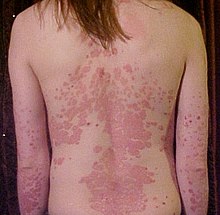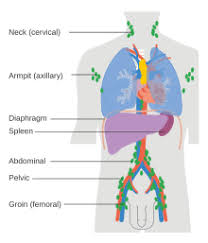Introduction
Mouth cancer, a silent threat lurk in our oral cavities, affects thousands of people worldwide each year. Yet, many of us remain unaware of its symptoms and causes, potentially missing crucial early warning signs.
You are unaware that a small, painless sore in your mouth could be the beginning of something far more serious. That’s the dangerous nature of mouth cancer – it often starts delicately, hidden as harmless oral issues. The symptoms and causes of mouth cancer, you can arm yourself with the knowledge to catch it early and increase your chances of successful treatment.
Mouth Cancer
A. High-risk areas in the mouth
Certain areas of the mouth are more susceptible to developing cancer. These high-risk zones can help in early detection and prompt treatment. The most common sites include:
Area | Risk Level | Common Symptoms |
Tongue | Very High | Persistent sores, lumps, or thickening |
Floor of the mouth | High | Difficulty moving the tongue or swallowing |
Lips | Moderate to High | Chronic sores or ulcers that don’t heal |
Gums | Moderate | Unexplained bleeding or numbness |
Inner cheeks | Moderate | White or red patches |

B. Types of mouth cancer
Mouth cancer can visible in various forms, each with its own characteristics and treatment approaches. The most common types include:
Squamous cell carcinoma: This accounts for about 90% of all mouth cancers and develops in the flat, thin cells that line the mouth and throat.
Verrucous carcinoma: A slow-growing cancer that rarely spreads to other parts of the body.
3. Minor salivary gland carcinomas: These rare cancers can occur in the glands that produce saliva.
4. Lymphoma: While less common, lymphomas can develop in the lymph tissue near the base of the tongue and tonsils.
These different types of mouth cancer is crucial for proper diagnosis and treatment planning. Each type may require a specific approach, highlighting the importance of consulting with healthcare professionals for accurate identification and management.

Recognizing Mouth Cancer Symptoms
Importance of regular self-examinations
Regular self-examinations are crucial for early detection of mouth cancer. By familiarizing yourself with the normal appearance of your mouth, you can quickly spot any changes that may be cause for concern. Here’s a simple guide to performing a self-examination:
Check your lips and gums
Examine the roof and floor of your mouth
Inspect your tongue, including the sides and underneath
Feel for lumps or swelling in your neck and jaw
Performing these checks monthly can significantly increase your chances of detecting mouth cancer in its early stages when it’s most treatable.
When to seek medical attention
If you notice any of the following signs or symptoms lasting for more than two weeks, it’s important to consult a healthcare professional:
Persistent mouth sores or ulcers
Unexplained bleeding in the mouth
White or red patches on the gums, tongue, or lining of the mouth
Difficulty swallowing or persistent sore throat
Changes in your voice or speech patterns
Remember, early detection is key to successful treatment.
Advanced symptoms
As mouth cancer progresses, more severe symptoms may develop:
Symptom | Description |
Pain | Persistent pain in the mouth or jaw |
Swelling | Noticeable swelling of the jaw or neck |
Numbness | Loss of feeling in the mouth, face, or neck |
Tooth mobility | Loosening of teeth without apparent cause |
Weight loss | Unexplained weight loss due to difficulty eating |
These symptoms indicate a more advanced stage of the disease and require immediate medical attention.
Early warning signs
Being aware of early warning signs can lead to prompt diagnosis and treatment. Look out for:
Persistent mouth sores that don’t heal within two weeks
Red or white patches in the mouth
Unexplained bleeding or numbness in the mouth
A lump or thickening in the cheek
Difficulty moving the jaw or tongue
Now that we’ve covered the symptoms of mouth cancer, let’s explore the common causes that can lead to its development. Common Causes of Mouth Cancer
A. Sun exposure to lips
Excessive sun exposure to the lips can significantly increase the risk of developing mouth cancer. The delicate skin on our lips is particularly vulnerable to UV radiation, which can damage DNA and lead to cancerous changes. To protect your lips:
Use a lip balm with SPF 30 or higher
Wear a wide-brimmed hat when outdoors
Avoid prolonged sun exposure during peak hours (10 am to 4 pm)
B. Poor oral hygiene
Maintaining good oral hygiene is essential for preventing mouth cancer. Poor oral health can lead to chronic inflammation and increase the risk of cancerous changes. Follow these practices:
Brush teeth twice daily
Floss daily
Use an antiseptic mouthwash
Visit your dentist regularly for check-ups and cleanings
C. HPV infection link
Human Papillomavirus (HPV) infection has been linked to an increased risk of mouth cancer, particularly in the back of the throat. Here’s what you need to know:
HPV Facts | Prevention Measures |
Transmitted through sexual contact | Practice safe sex |
Can cause cellular changes in the mouth and throat | Get vaccinated against HPV |
Often asymptomatic | Regular dental check-ups |
D. Alcohol consumption risks
Excessive alcohol consumption is a significant risk factor for mouth cancer. Alcohol can damage the cells in your mouth and throat, making them more susceptible to cancerous changes. To reduce your risk:
Limit alcohol intake
Avoid binge drinking
Choose low-alcohol or non-alcoholic alternatives
E. Tobacco use and its effects
Tobacco use, in any form, is one of the leading causes of mouth cancer. The harmful chemicals in tobacco can damage the cells in your mouth and throat, leading to cancer development. To protect yourself:
Quit smoking or using smokeless tobacco
Avoid secondhand smoke
Seek support from smoking cessation programs
Use nicotine replacement therapy if needed
These common causes of mouth cancer empowers us to make informed decisions about our lifestyle choices. Next, we’ll delve deeper into the specific lifestyle factors that can influence your risk of developing mouth cancer.
Lifestyle Factors Influencing Mouth Cancer Risk
Now that we’ve explored the common causes of mouth cancer, let’s delve into the lifestyle factors that can significantly influence the risk of developing this condition.
A. Age and gender considerations
Mouth cancer tends to affect older individuals more frequently, with the risk increasing after age 50. Men are generally more susceptible to mouth cancer than women, possibly due to higher rates of tobacco and alcohol use.
B. Genetic predisposition
While not a direct cause, genetic factors can play a role in mouth cancer risk:
Inherited gene mutations
Family history of cancer
Certain genetic syndromes
C. Occupational hazards
Some professions may expose individuals to carcinogens that increase mouth cancer risk:
Construction workers (exposure to asbestos)
Textile workers (exposure to certain dyes)
Painters (exposure to solvents)
Agricultural workers (exposure to pesticides)
D. Diet and nutrition
Diet plays a crucial role in mouth cancer risk. Here’s a comparison of beneficial and harmful dietary factors:
Beneficial Factors | Harmful Factors |
Fresh fruits and vegetables | Processed meats |
Omega-3 fatty acids | High-fat diets |
Antioxidant-rich foods | Excessive salt consumption |
Whole grains | Sugary foods and drinks |
A diet rich in fruits, vegetables, and whole grains can help reduce the risk of mouth cancer, while a diet high in processed foods and red meat may increase the risk

Preventing Mouth Cancer
Now that we’ve explored the risk factors for mouth cancer, let’s focus on prevention strategies that can significantly reduce your chances of developing this disease
Vaccination against HPV
Human Papillomavirus (HPV) vaccination is a crucial step in preventing certain types of mouth cancer. The vaccine is most effective when administered before exposure to the virus, typically recommended for:
Girls and boys aged 11-12
Teens and young adults up to age 26 who haven’t been vaccinated
Vaccination against HPV
Human Papillomavirus (HPV) vaccination is a crucial step in preventing certain types of mouth cancer. The vaccine is most effective when administered before exposure to the virus, typically recommended for:
Girls and boys aged 11-12
Teens and young adults up to age 26 who haven’t been vaccinated
Vaccine Type | Recommended Age | Number of Doses |
HPV9 | 11-12 years | 2 doses |
HPV9 | 15-26 years | 3 doses |
Regular dental check-ups
Routine dental visits are essential for early detection and prevention of mouth cancer. Your dentist can:
Perform oral cancer screenings
Identify precancerous lesions
Provide professional cleaning to maintain oral health
Aim for dental check-ups at least twice a year, or more frequently if recommended by your dentist.
Protecting lips from sun damage
Sun exposure can increase the risk of lip cancer. To protect your lips:
Use a lip balm with SPF 30 or higher
Wear a wide-brimmed hat when outdoors
Avoid prolonged sun exposure during peak hours (10 am to 4 pm)
Maintaining good oral hygiene
A healthy mouth is less susceptible to cancer. Follow these oral hygiene practices:
Brush teeth twice daily with fluoride toothpaste
Floss at least once a day
Use an antiseptic mouthwash
Replace your toothbrush every 3-4 months
Quitting tobacco and limiting alcohol
Tobacco use and excessive alcohol consumption are major risk factors for mouth cancer. To reduce your risk:
Quit smoking and using all tobacco products
Limit alcohol intake to no more than 1 drink per day for women and 2 for men
Seek support from healthcare providers or support groups if needed